Planning a conservatory? All your questions answered
Planning a conservatory? We answer your before-you-buy questions, including those you haven’t even thought of yet
If you're planning a conservatory, it's worth considering the following key questions before you order your structure or a brick is laid.
Which conservatory will suit my home?
‘The design of the conservatory should be sympathetic to the architecture of the house,' says David Salisbury, Managing Director, David Salisbury.
'This house (below) was dominated by gables, and the conservatory mirrors this to ensure perfect harmony of the new structure with the existing property. A timber conservatory complements a country home as it helps a property to blend with the surrounding area.'
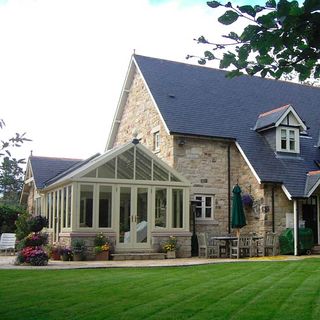
How do I choose a paint colour for my conservatory?
Consider the external appearance of your house, the colour of the brick or stone and the window frame colour, says Jane Hindmarch, Marketing Manager, Vale Garden Houses. Green and blue tones work very well with brick. With a stone backdrop, you can choose from a wider palette to achieve a more personalised look.'
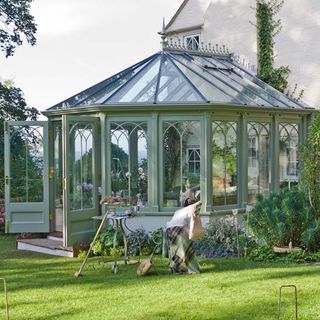
How can I regulate the temperature in my conservatory?
‘South-facing glass roofs get hot, and modern double glazing should have a UV filter to reduce solar gain,' says Jeremy Uglow, Managing Director, Glass Houses by Jeremy Uglow. ‘For winter, underfloor heating is an option. On smaller areas - less than 20sq m - an electrical system is preferred. Wet underfloor systems suit larger areas, but these are harder to install.

Can I fit a conservatory in a courtyard garden?
‘Anything is possible, but there may be constraints, such as the restrictions of your house, whether you are fixing to your neighbours' walls, or drainage,' says Stephanie Hill, Design Director, Trombé.
‘The space available can be an issue, as well as whether you are overlooked or in a conservation area or a listed building. If the conservatory is overlooked, there are various glass options for privacy: opaque, sandblasted, applied films, coloured interlayers, and glass that goes opaque at the flick of a switch - although that would be a very expensive solution.
Get the Ideal Home Newsletter
Sign up to our newsletter for style and decor inspiration, house makeovers, project advice and more.

What are the benefits of a lean-to conservatory?
‘The decision to install a lean-to conservatory onto your home will bring a wealth of benefits - the adaptable style can help use dead space in properties that would not otherwise be extendable,' says Brendan Day, National Sales Manager, Apropos.
‘A reverse lean-to shape can fit under low eaves, suiting a cottage. In addition, a lean-to is often the most economical choice of home extension as the structure is simple yet striking, giving a smaller project the illusion of a large, light-filled open space.
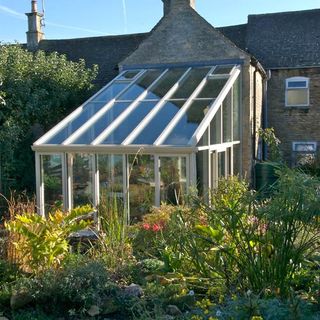
What choice of blinds do I have?
‘Neat pleated blinds are ideal for conservatory roofs as they are made to fit awkward shapes,' says Sarah Quilliam, Head of Product Design, Hillarys.
‘Those with thermal insulation properties reflect the heat of the sun. For the sides, choose from Venetian, Roman, roller, vertical or pleated blinds. With top-down, bottom-up pleated blinds, you can cover the lower half of the window for privacy, or you can use it like a conventional blind from the top.'
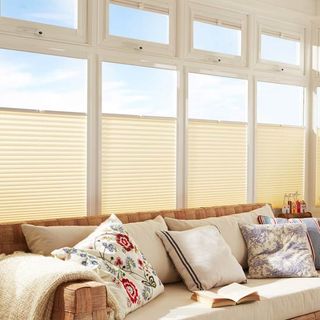
Will I need planning permission for my conservatory?
‘A conservatory is considered to be permitted development, providing certain conditions are met', says Mervyn Montgomery, Managing Director, Hampton Conservatories.
‘Extensions and other outbuildings must not exceed 50% of the total land around the house. The maximum permitted height is 4m, or 3m if it's within 2m of a boundary. The permitted depth is normally 3m on a semi-detached house and 4m on a detached.'
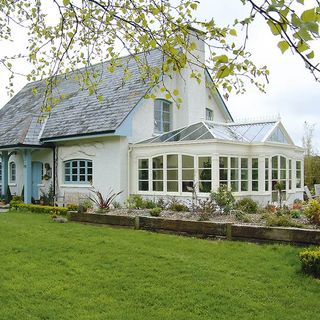
'However, these limits have been temporarily increased to 6m and 8m until 30 May 2016. The exceptions to these guidelines are conservation areas, national parks and AONBs.'
-
 How often should you mow your lawn? A month-by-month guide to cutting your grass, according to experts
How often should you mow your lawn? A month-by-month guide to cutting your grass, according to expertsAre you cutting your grass enough?
By Lauren Bradbury
-
 How to grow mint from seed – expert tips for super easy (and tasty) herbs on tap
How to grow mint from seed – expert tips for super easy (and tasty) herbs on tapAmateur gardeners, assemble! Here's how to grow mint from seed like a pro...
By Kayleigh Dray
-
 How to care for a lawn in shade – expert tips for lush green grass in a shady garden
How to care for a lawn in shade – expert tips for lush green grass in a shady gardenShady garden? No problem! You can still have the lawn of your dreams with just a few tweaks...
By Kayleigh Dray